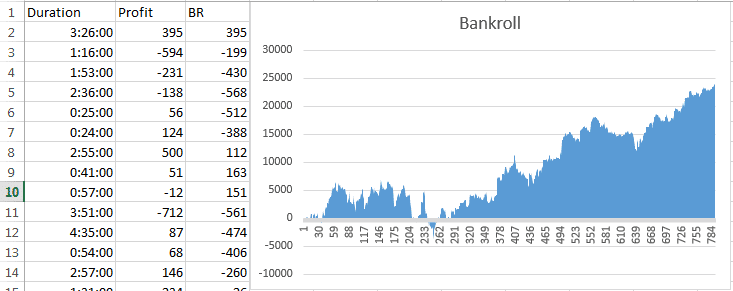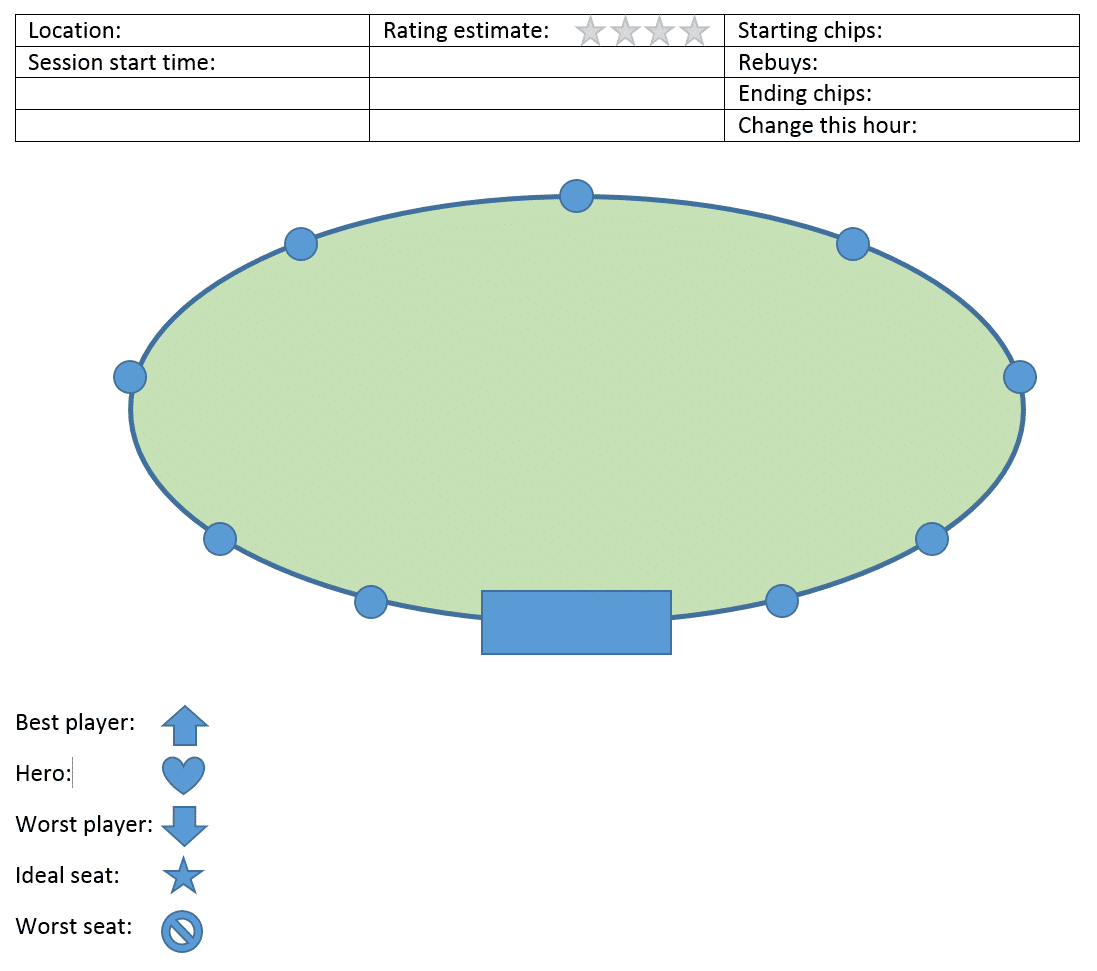I am a regular Jane Goodall of the poker table. In researching different topics I have taken notes of different behaviors at the tables. What positions open the pot first for the next 100 hands? Is that open a limp or a raise? What is the VPIP of the tightest guy at the table? I record interesting hands for further study. I look at a lot of different things. Remember, that which is measured, improves.
It is a given that you should be recording, at minimum, the session lengths and profit for every game. I will discuss these records at length in an upcoming contribution. If you are not already doing this, at least start a spreadsheet like this:

In the near future, we will be doing analysis on this kind of data. You should be gathering it for a variety of reasons — start today.
Today’s worksheet is something different. I want to rate my table. I feel like I know if a table is going to be good or bad pretty quickly, but am I right? I don’t know, but I am willing to start taking some notes to find out. I have printed out a bunch of the following worksheets:

The idea here is that I set an alarm to go off every hour while I am playing. I wait until I am UTG+1, then I got fill out this chart. If you are going to miss any hands, they might as well be the ones that are least profitable. So these charts force you to think about a few things.
At the beginning of the hour, do you think this will be a 1-4 star table? By the end of the hour you will know how much your chip stack has changed. If we do this for enough hours, you will start to see if your estimations are right. Why is this estimation and confirmation important?
If you gain confidence that you can estimate the value of a table before you sit down, that is incredibly valuable. I know that often times when I go to the cardroom I am offered several tables with one open seat each. This choice of tables can be the difference between a winning and a losing session. You are going to play anyways, you might as well refine your ability to table select. In much the same way, once seated you can ask for a table change. Go look at the offered table, is it an improvement upon your current one?
The next part of this sheet is to force you to think about the other players once you have chosen your table. On your diagram, a few hands in, you should write your estimates about the players. I have marked five symbols to use, but you can add more. At the end of the hour, you can see if your estimate changed.
The ability to quickly ascertain the quality and style of your opponents is important. Forcing yourself to think about who is the best and worst player at the table will help you with your poker sense. Having an idea of which seat will be the best is important so you can quickly grab it if it opens up. I am a ruthless seat changer. It is pretty transparent that I am trying to get position on a certain player, and that is OK.
This little worksheet is a work in progress. What other notes are you taking on your table that you think should be added to this?

Wow, this is an awesome tool! At my local B&M card club I like to count hands played in my little notebook, and I record the actual time for the hands I’m actually playing. I make stick men to note the hands I’ve folded pre-flop. When I’m involved in a hand, I note my opponents as X seats off the button, and record flop turn and river play along with the betting on each street. Since I’m playing a relatively small amount of hands, I’ve got time to enter them. I also like to break about every 25-30 minutes and write down stuff I think is relevant to the game I’m in. I think that picking tables and recording player types and skill levels is a GREAT idea!
If you like these kinds of notes then be sure to get my “Ship The Turn” Video. I go through my extensive set of notes for every hand played in an 8 hour 1-2 game. The video is released December 1st, 2014 to PRO members and in the archives staring in the new year.